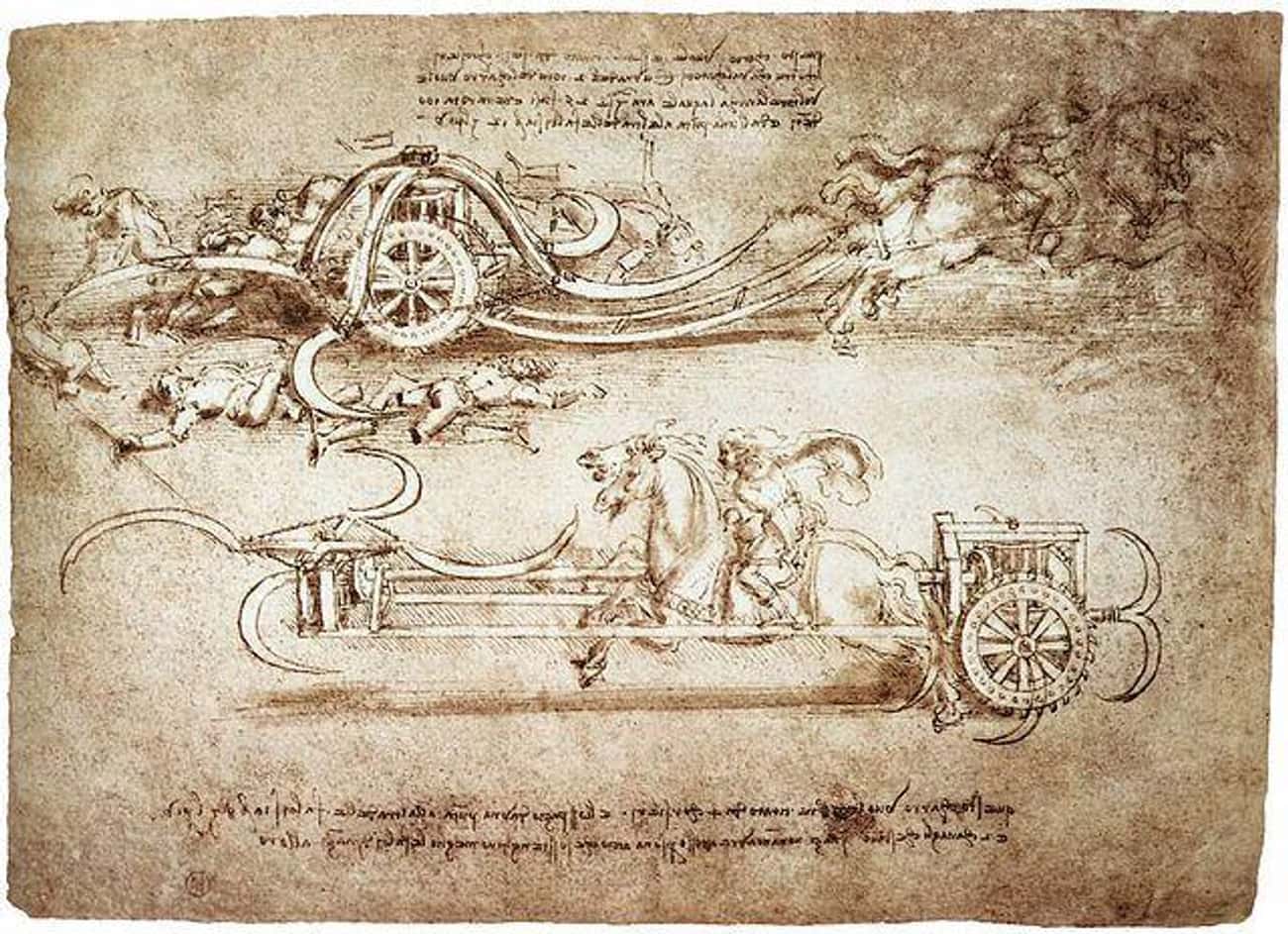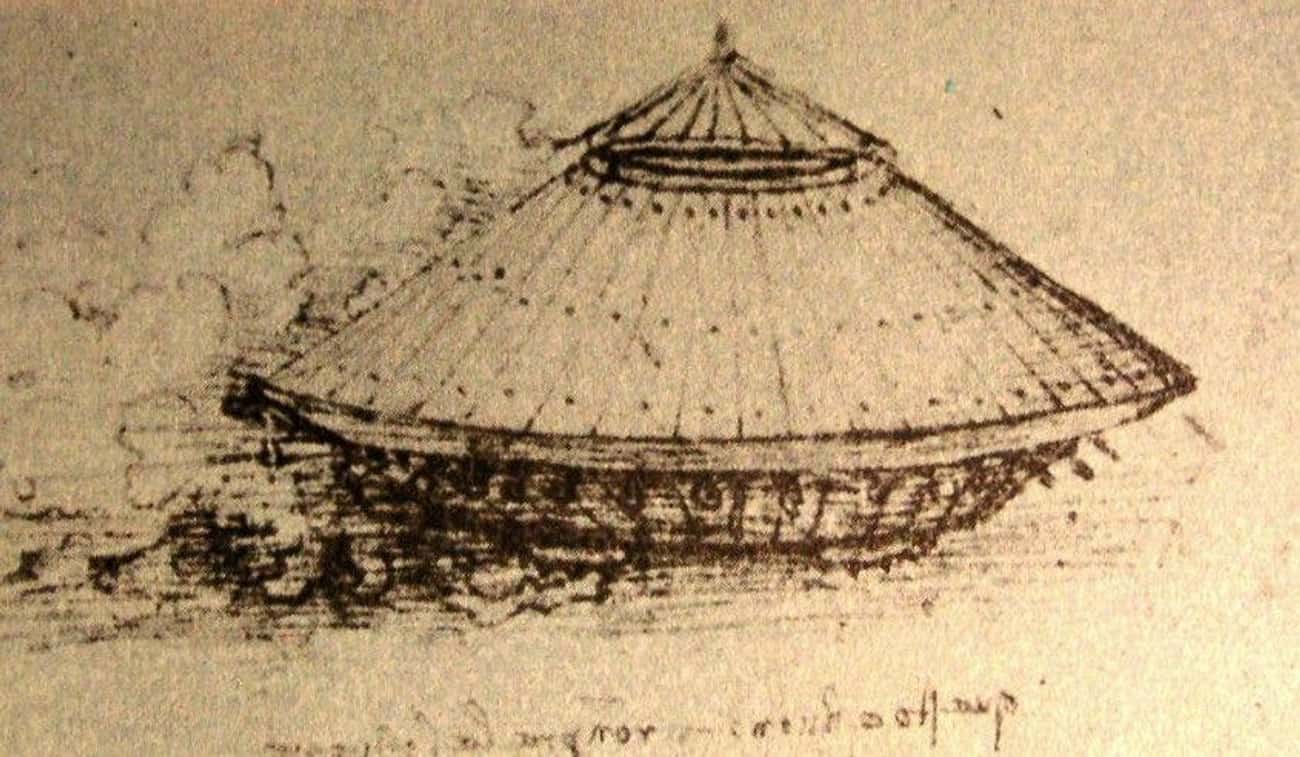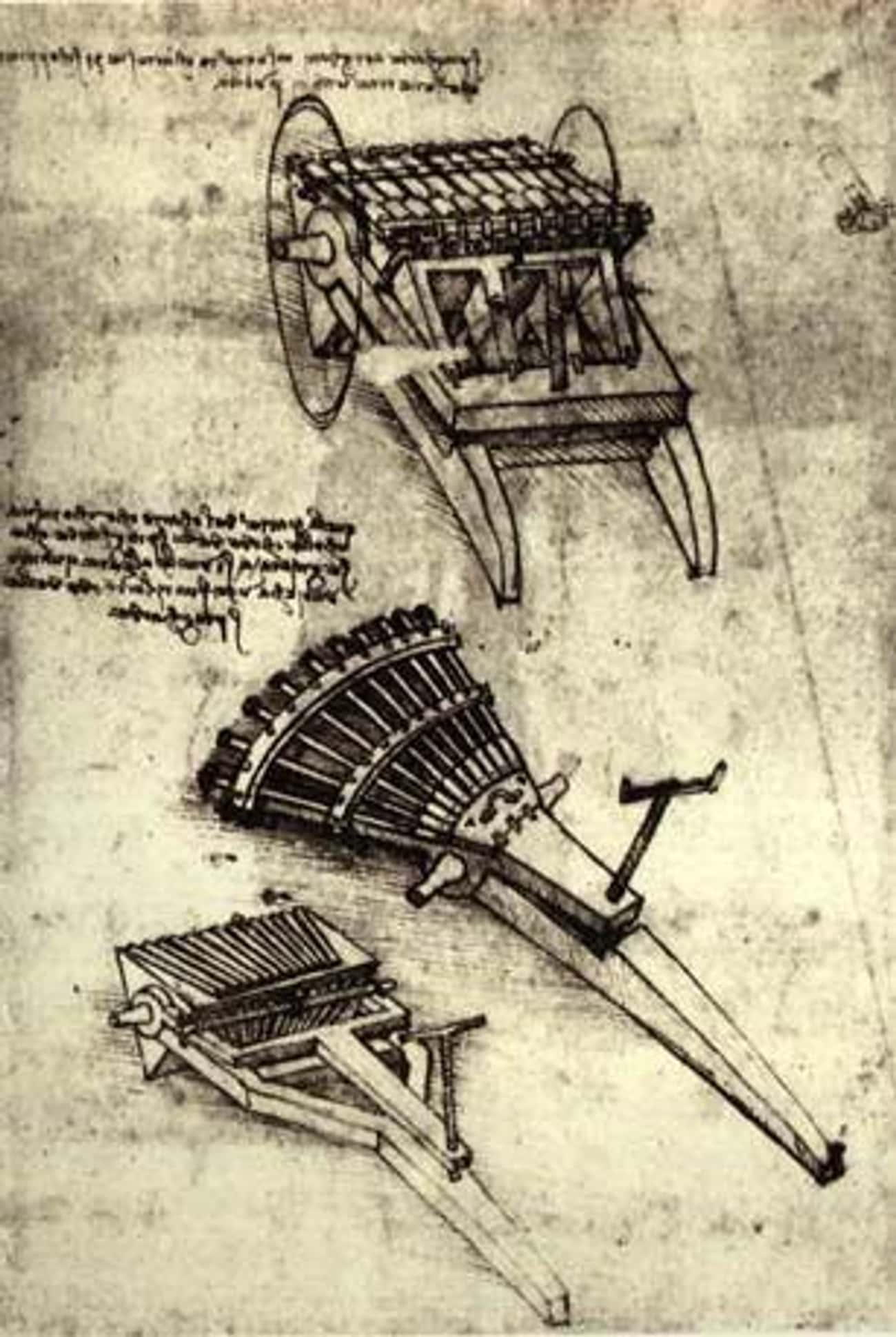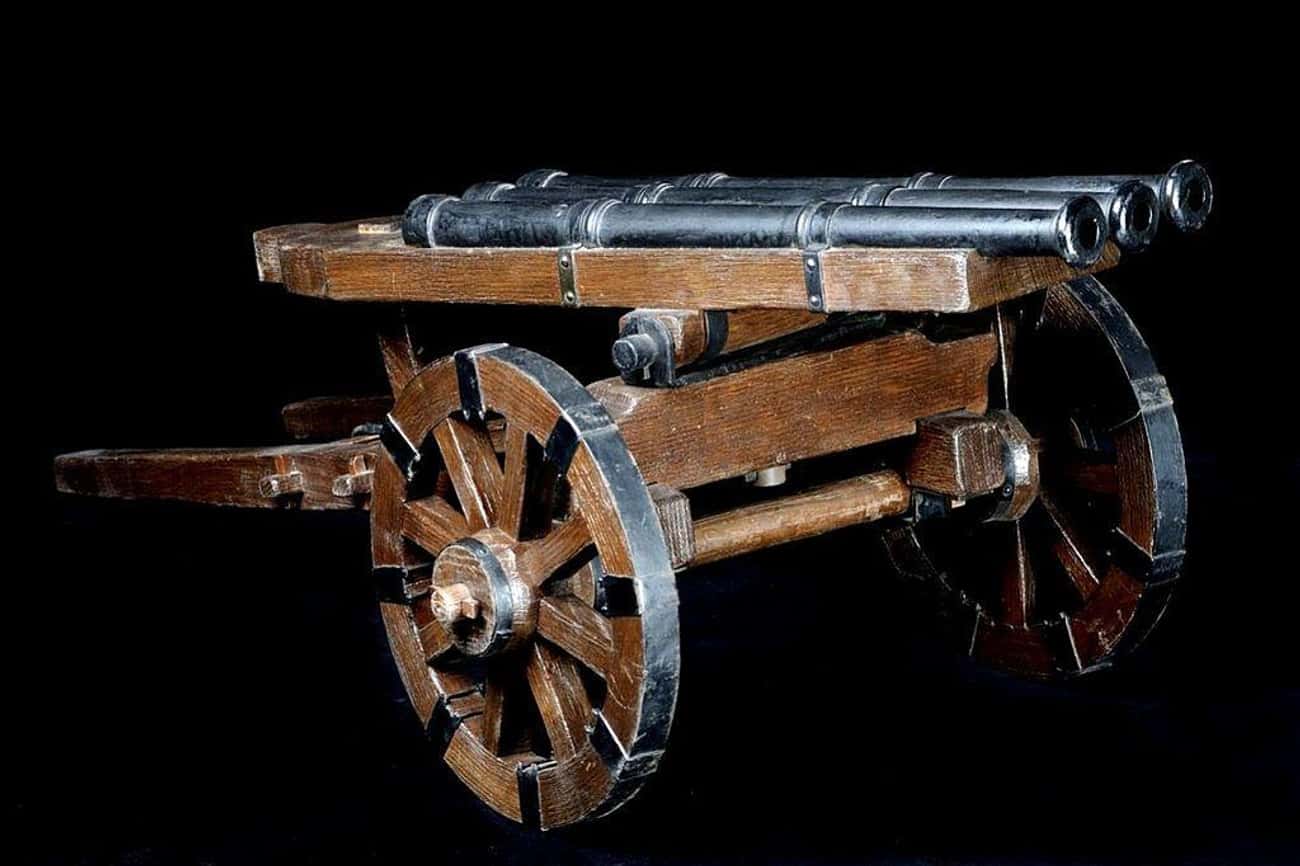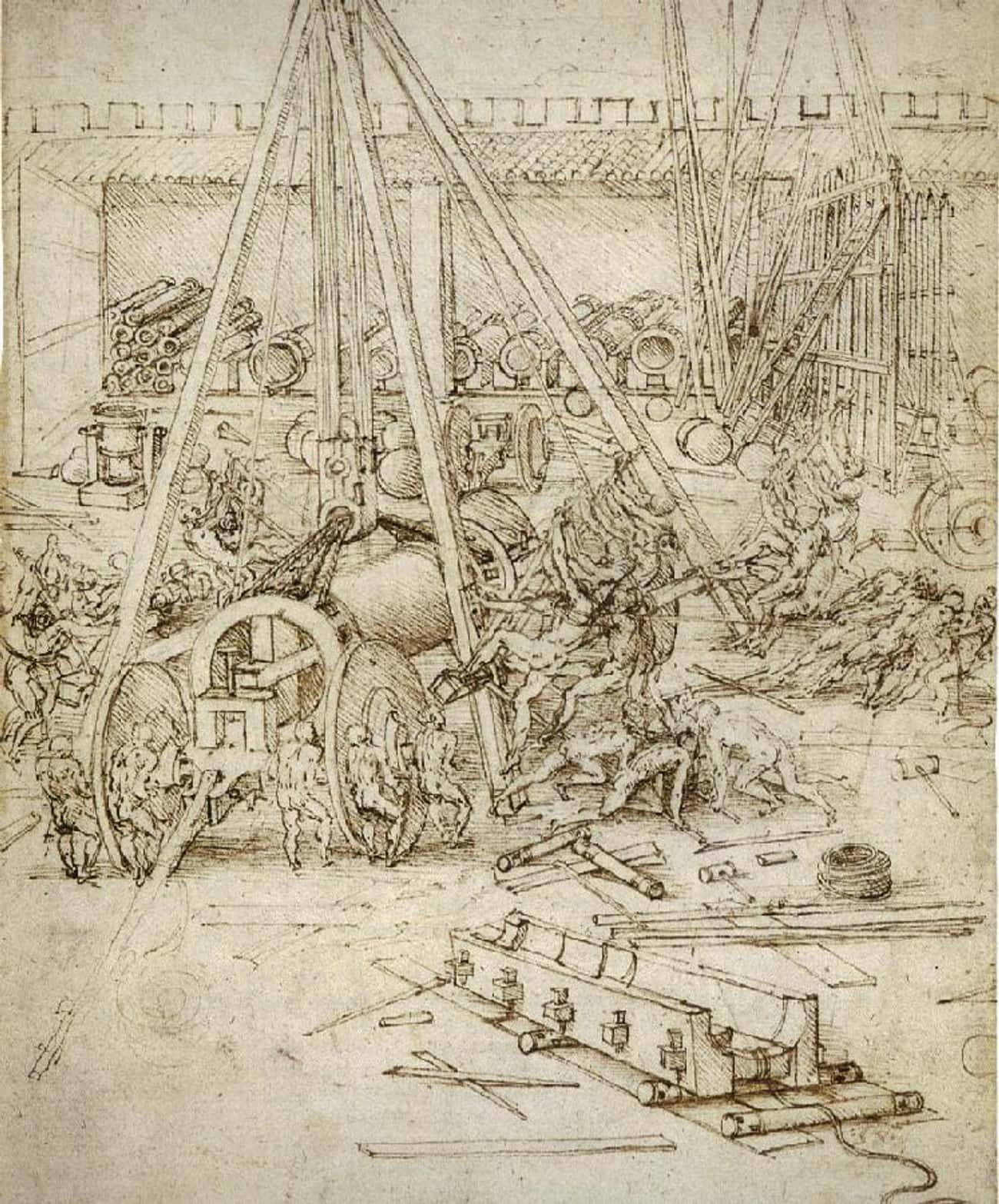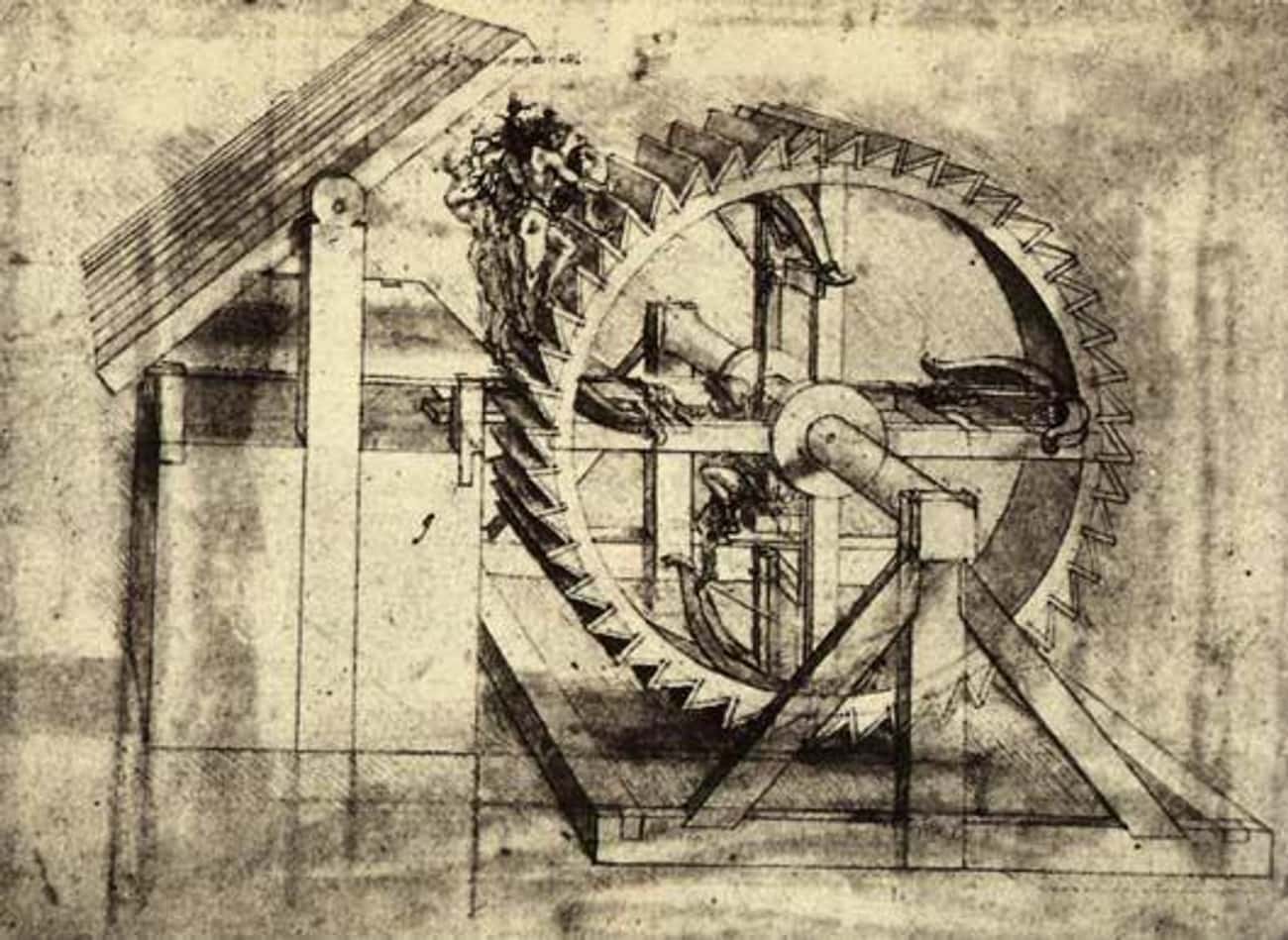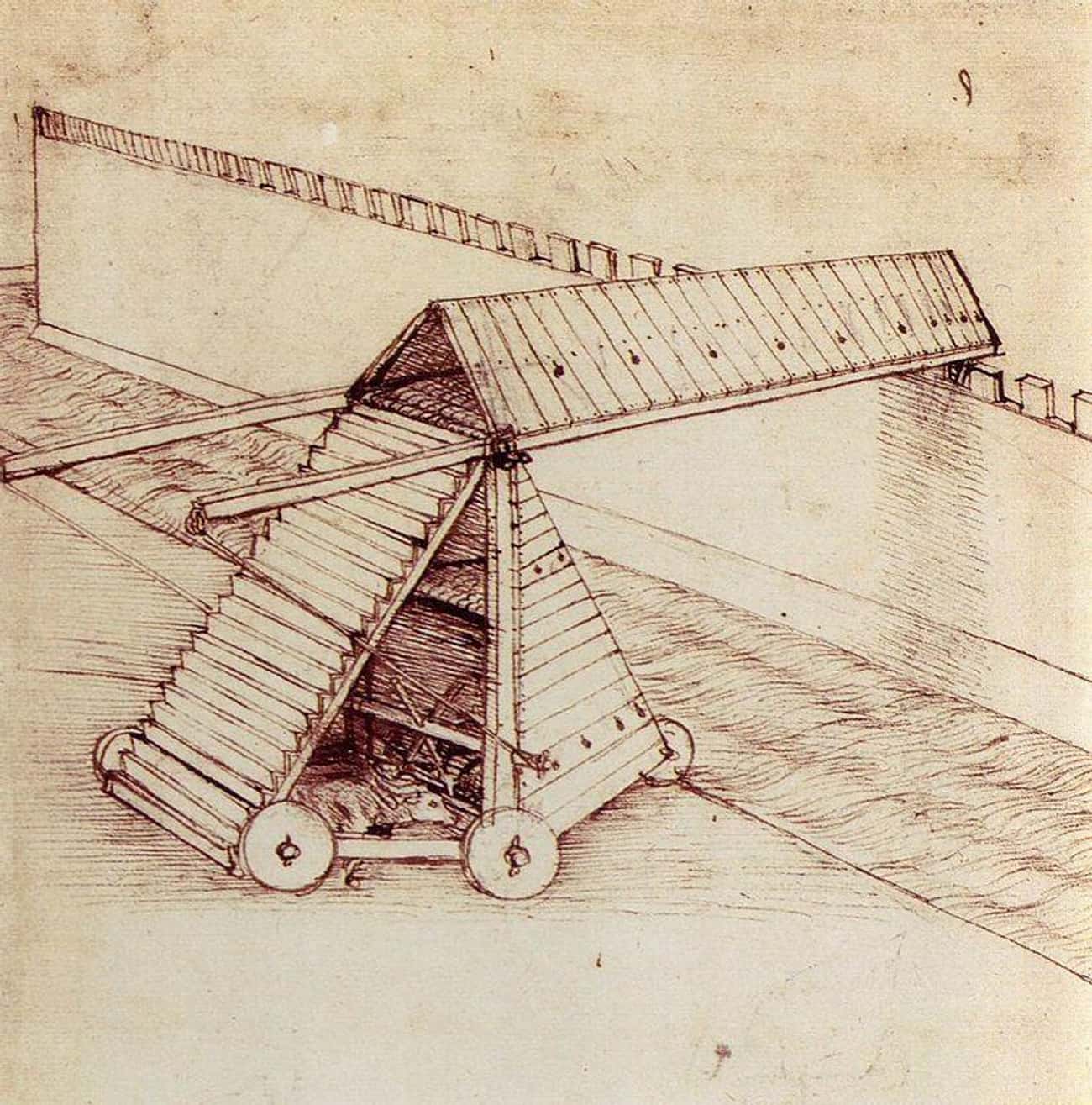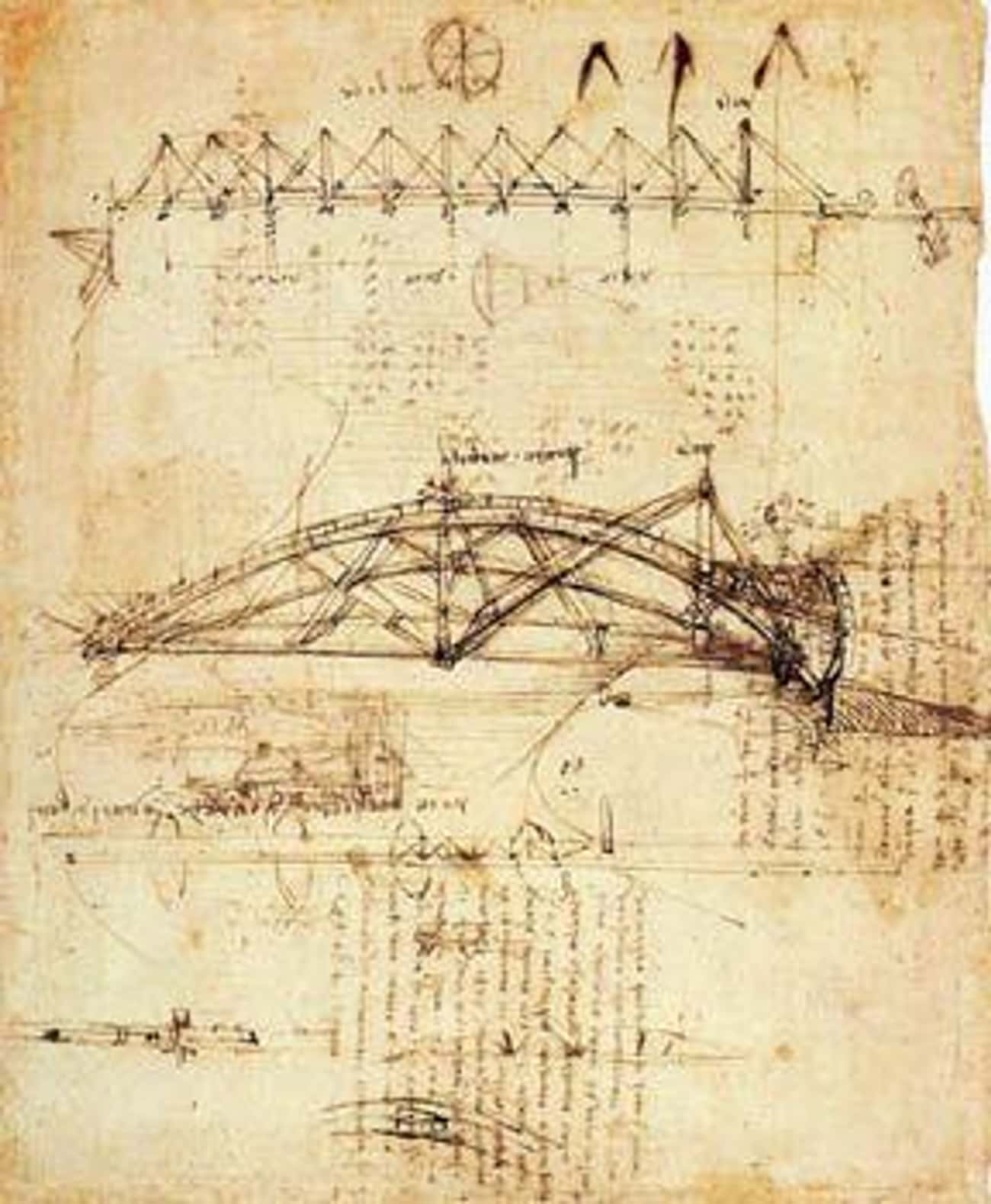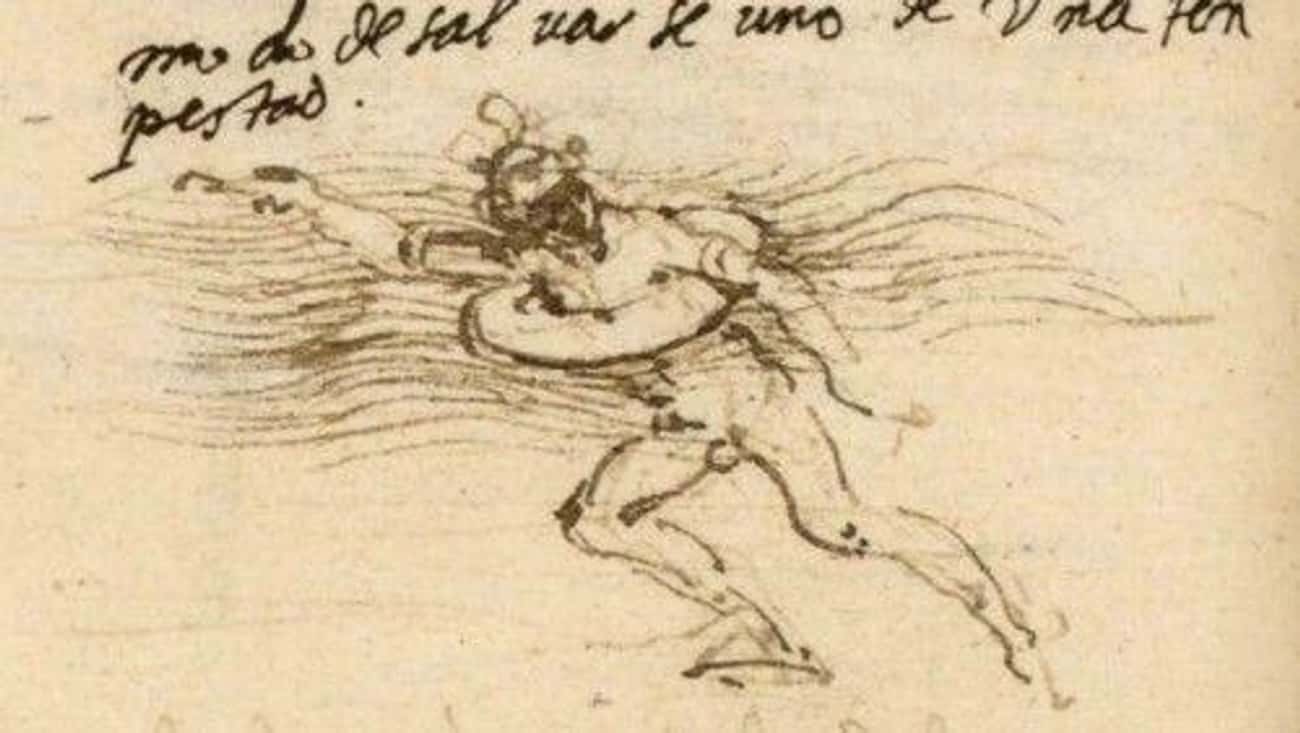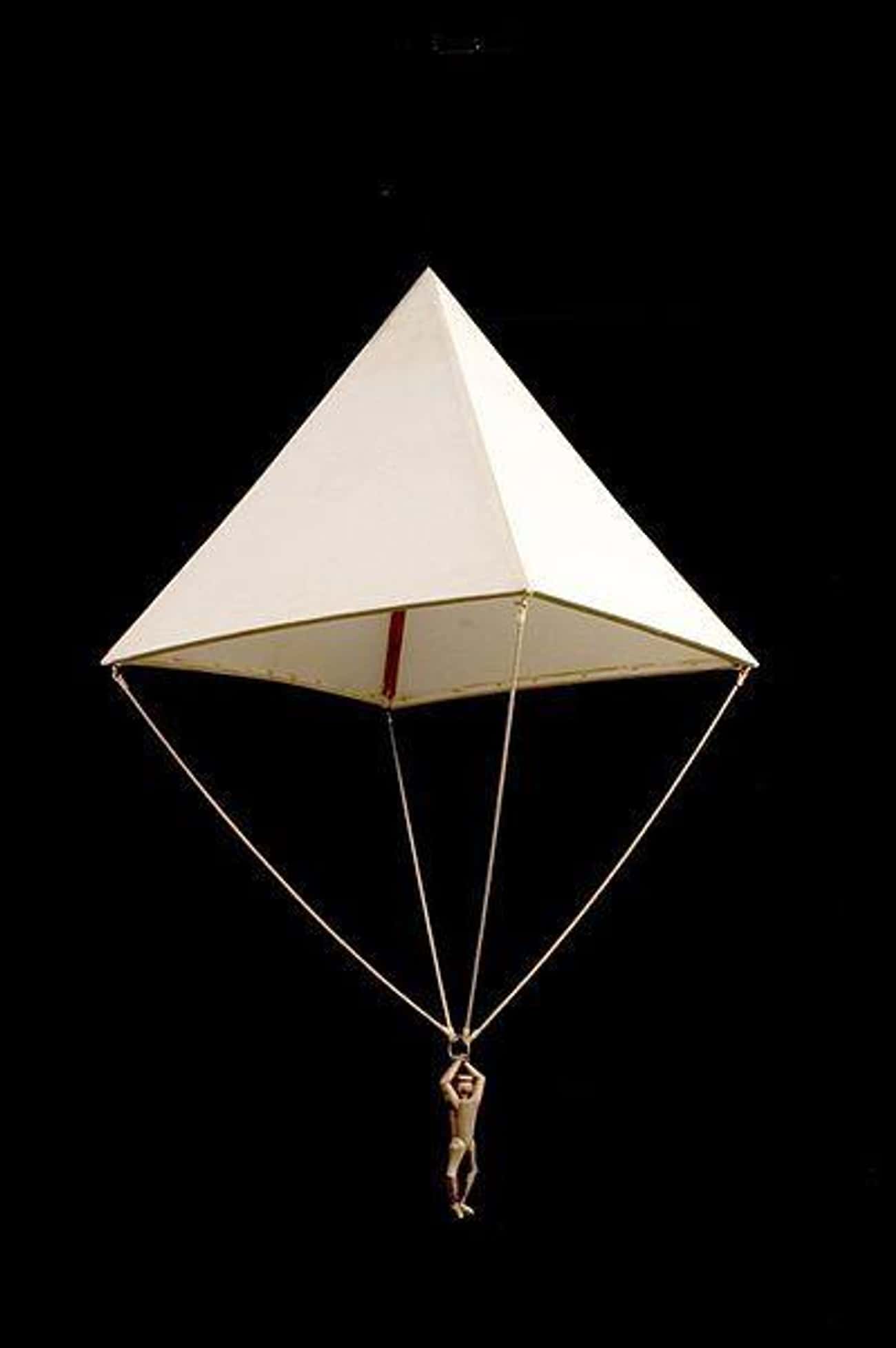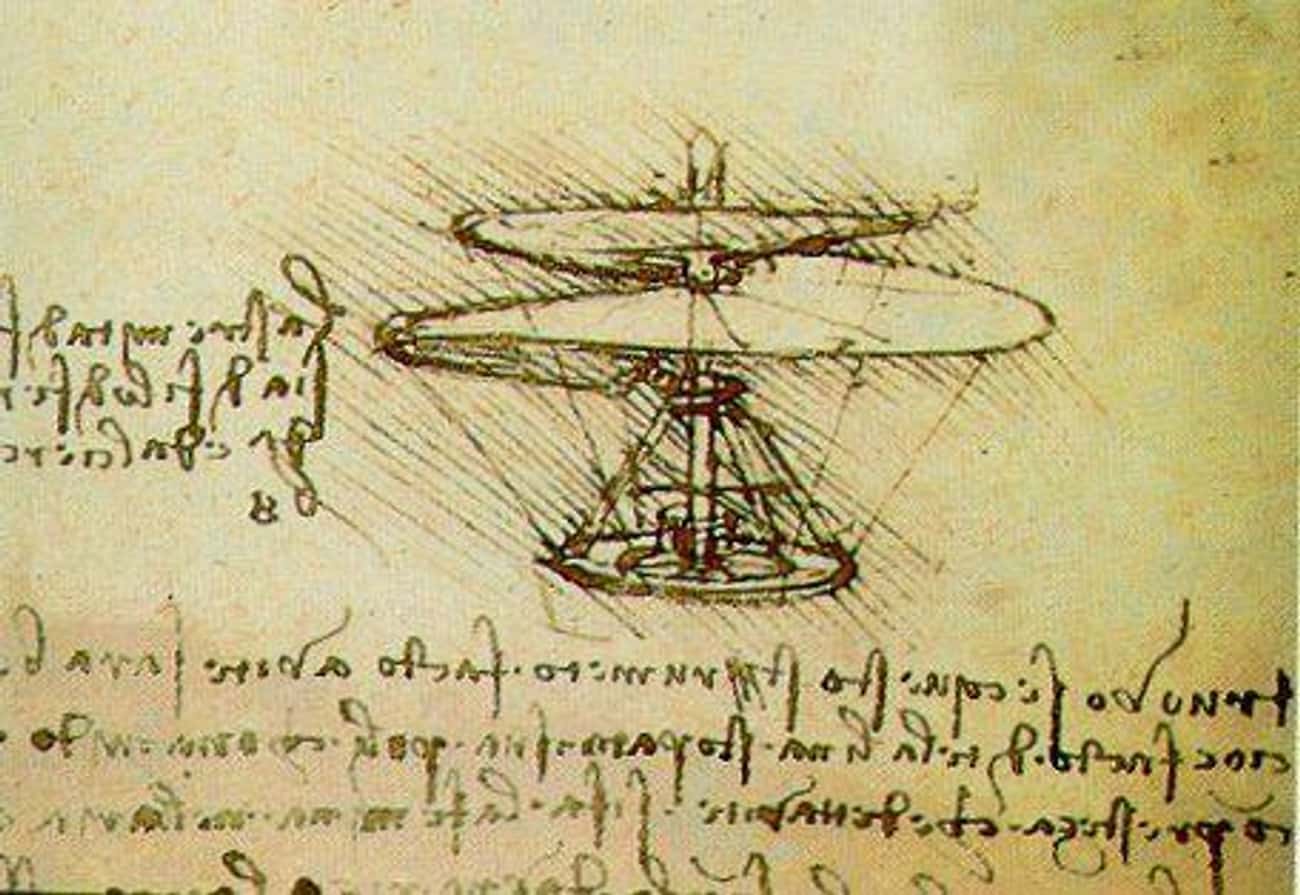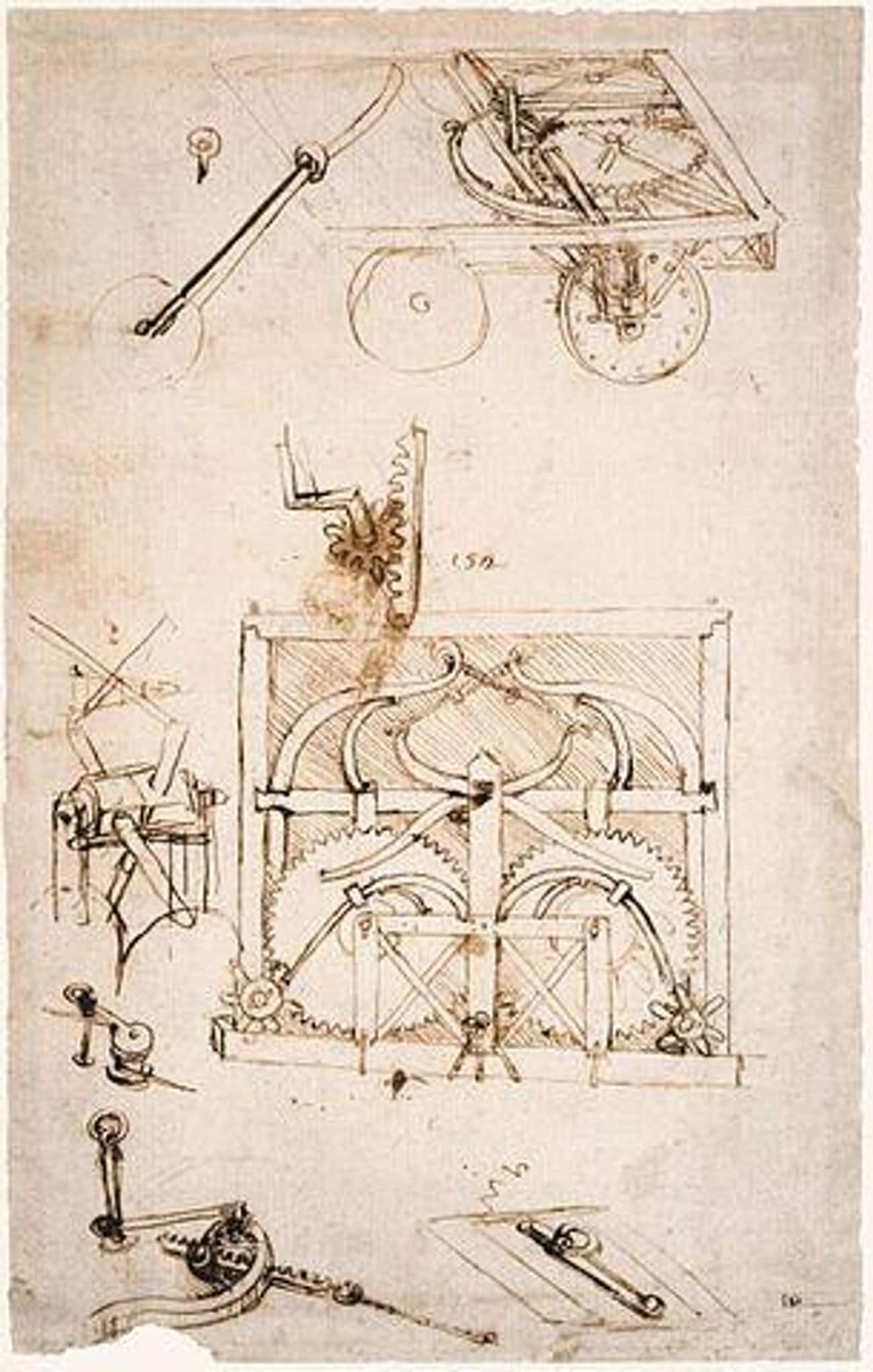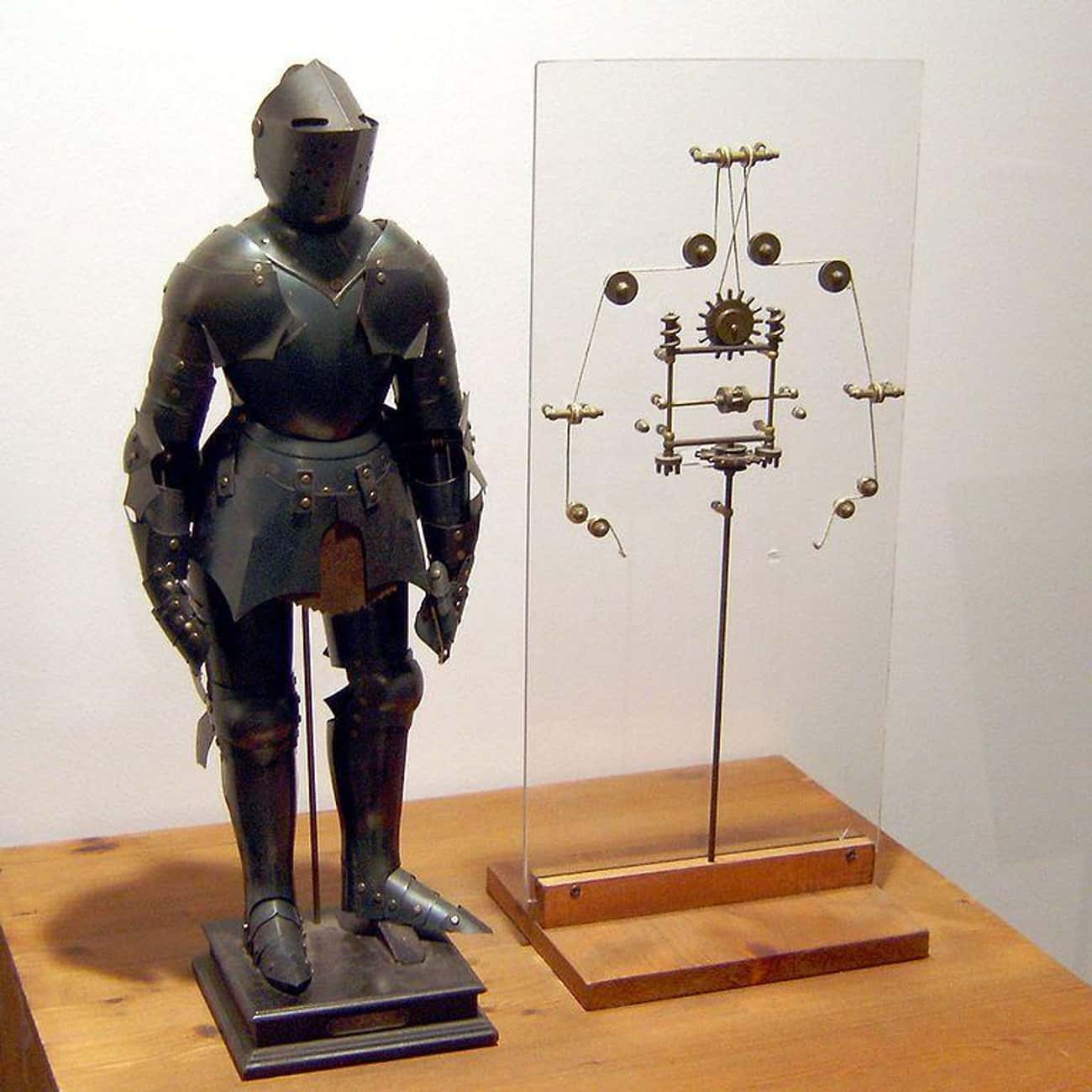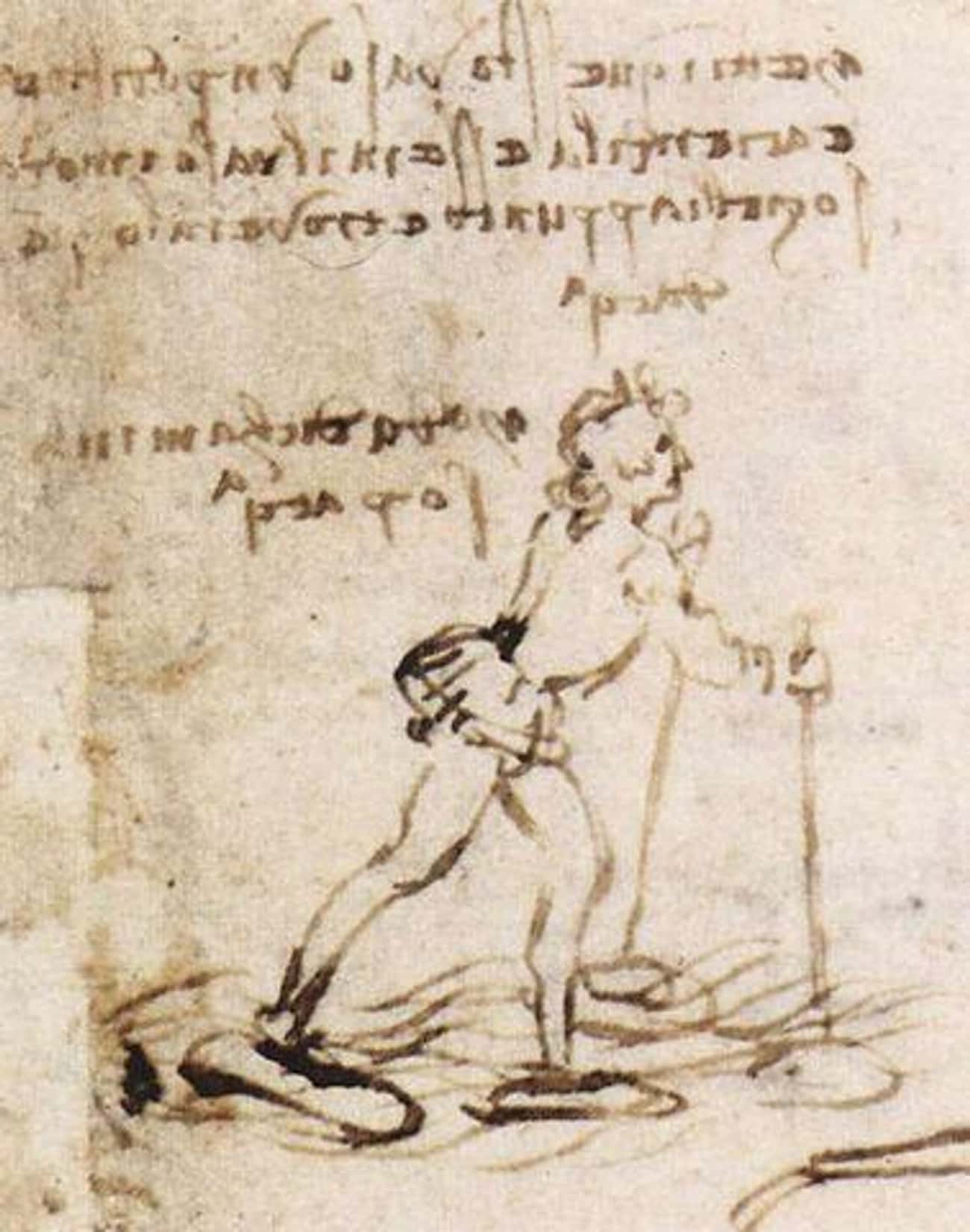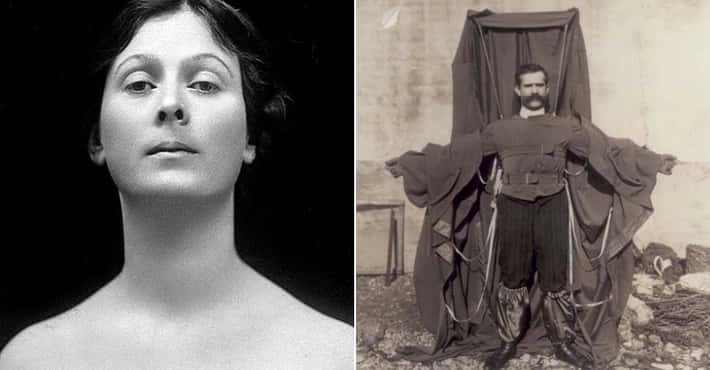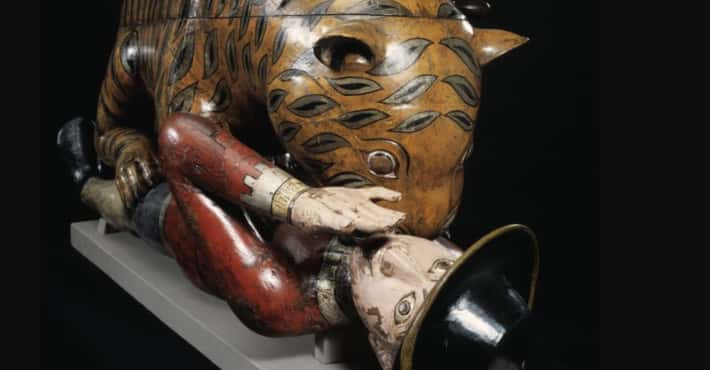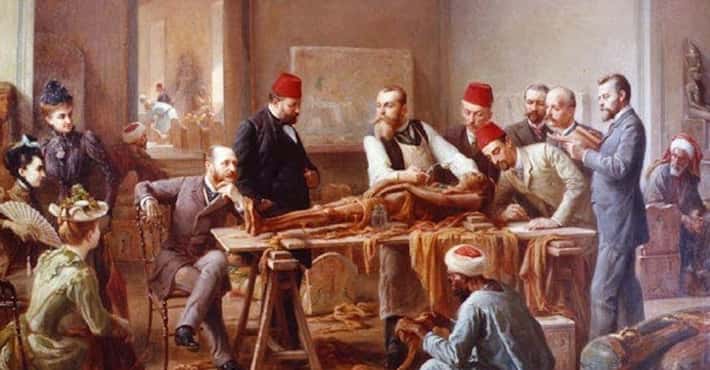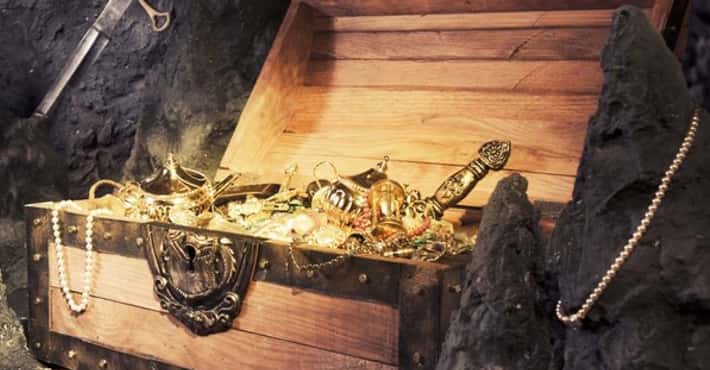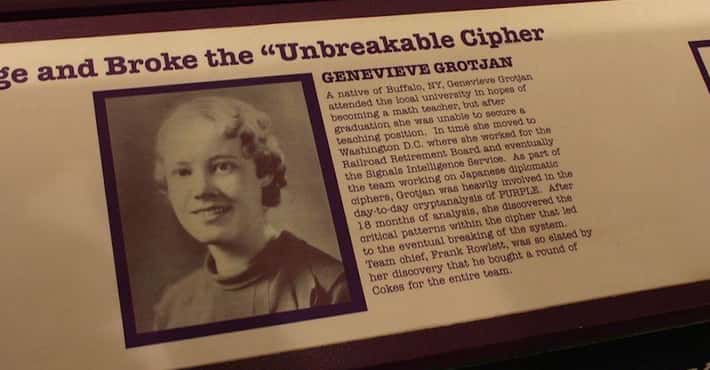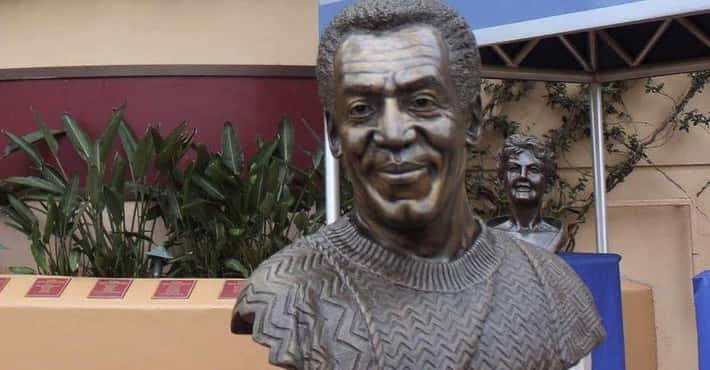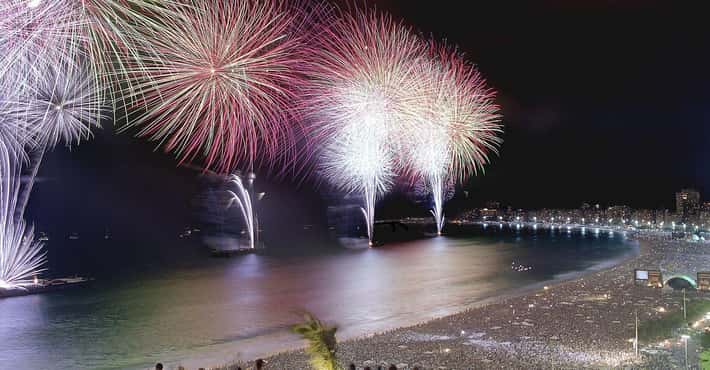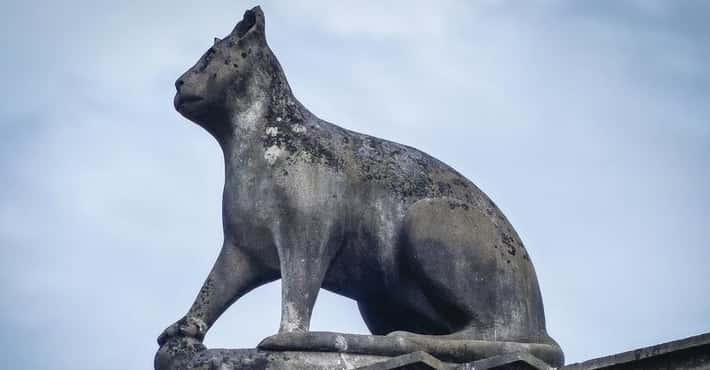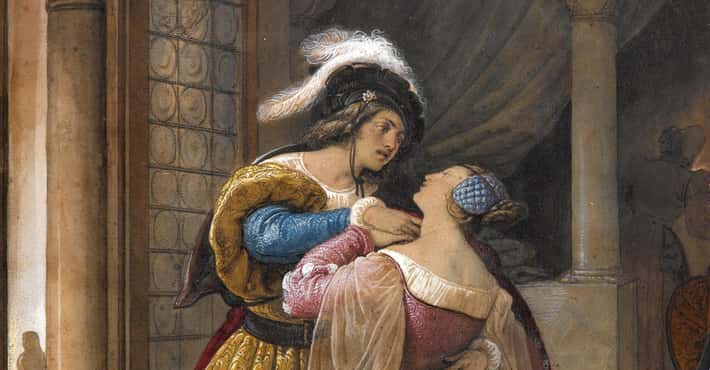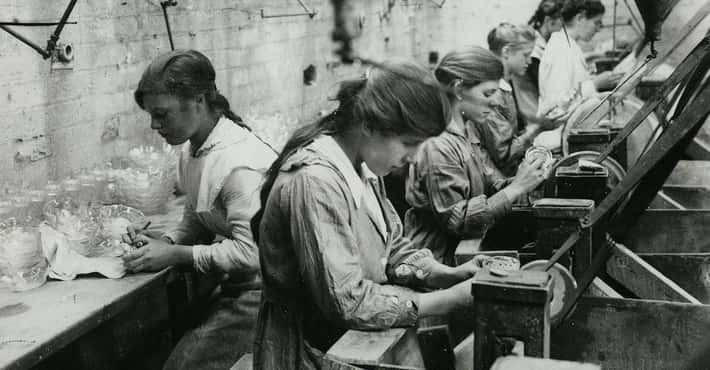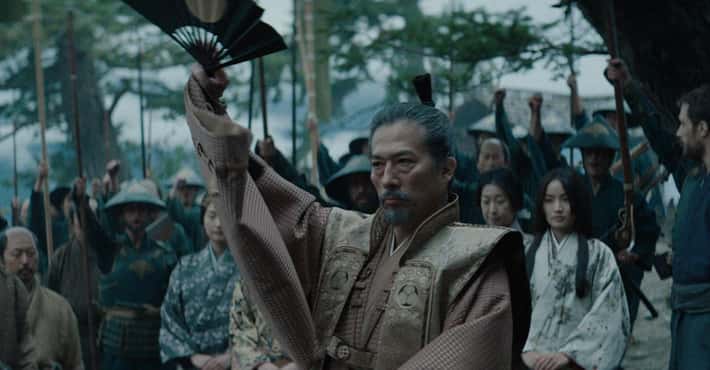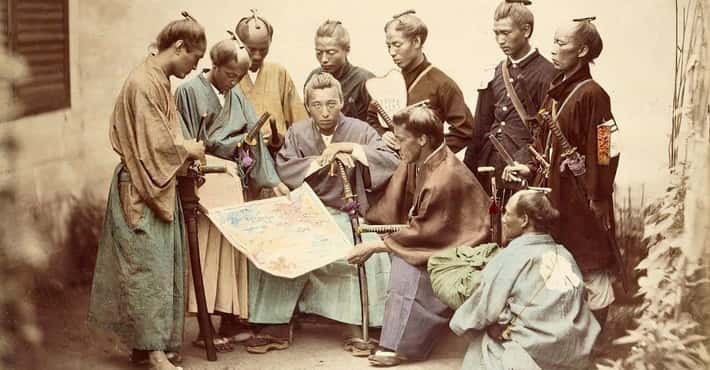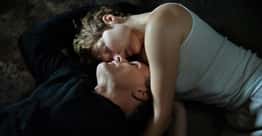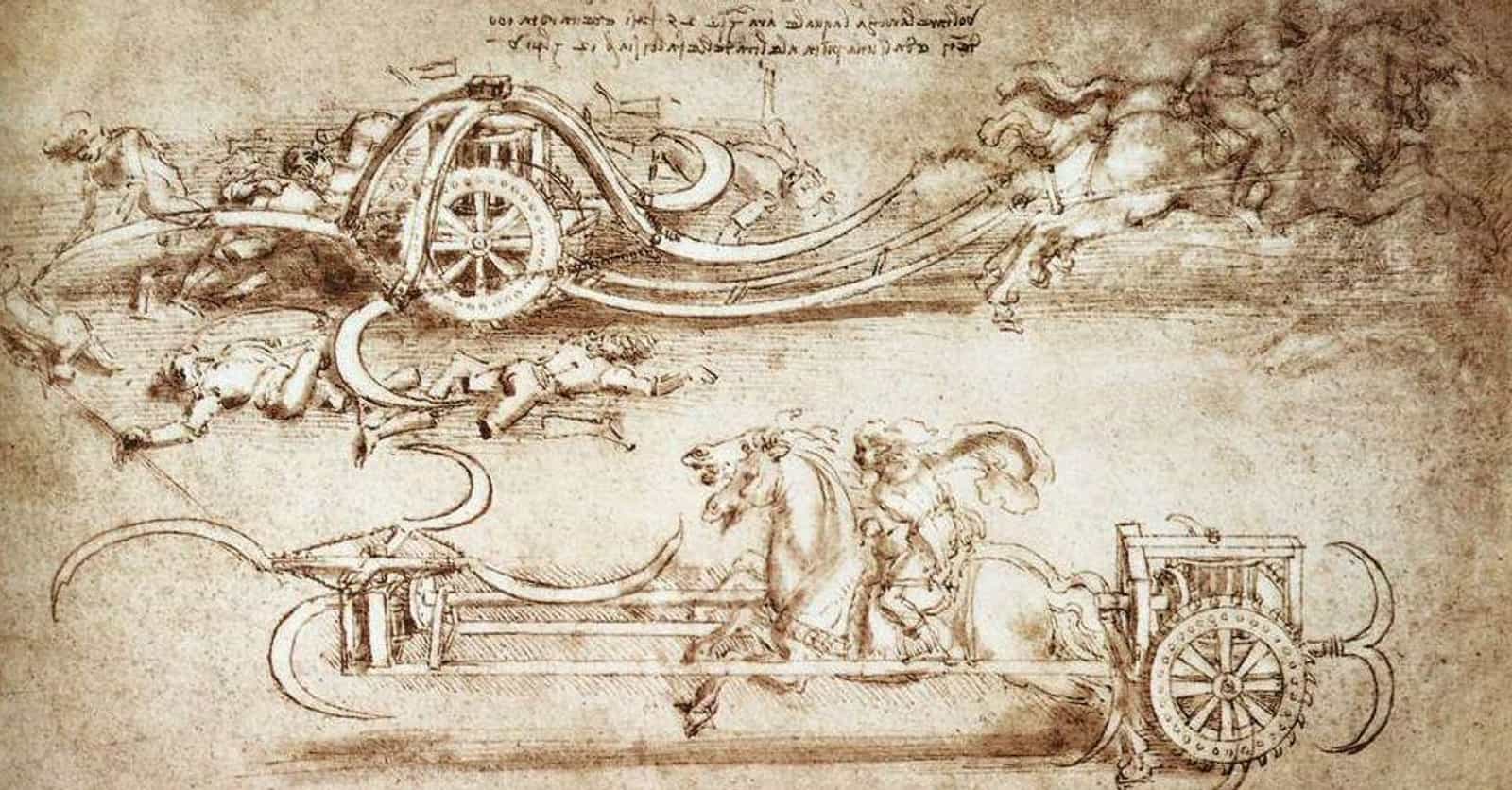
The Craziest Weapons Of War Leonardo Da Vinci Ever Invented
- 1158 VOTES
A Rotating Scythed Chariot Would Cut Down Anyone In Its Path
Photo: Leonardo da Vinci / Wikimedia Commons / Public DomainThe ancient world of chariots would have fascinated a humanist like Leonardo da Vinci, and he sought to make improvements on that technology. In one of his drawings, Leonardo drew a chariot with large, powerful blades on the sides. Presumably, the sharp side-pieces were meant to rotate and cause maximum harm to all in the chariot's path.
- 2140 VOTES
An Armored Vehicle Protected Its Driver And An Array Of Cannons
Photo: Leonardo da Vinci / Wikimedia Commons / Public DomainDuring the late 1480s, Leonard da Vinci designed what was essentially a covered cart to protect soldiers from incoming projectiles as they made their way into combat. The vehicle was developed for the Duke of Milan, and to facilitate movement, Leonardo included a system of gears and cranks so animals or humans could pull the weight of the machine.
The cart itself could carry several cannons with ammunition to hurl at one's enemy, and it allowed for 360-degree firing. The conical-shaped covering was made of metal plates and featured a turret from which soldiers could see where they were going while remaining protected. Leonardo blended the speed and agility of a chariot with the protective principle behind the Roman "tortoise formation" to protect soldiers on the move.
- 3128 VOTES
The 33-Barreled Organ Fired A Simultaneous Barrage Of Projectiles
Photo: Leonardo da Vinci / Wikimedia Commons / Public DomainWhile developing military equipment for the leading families in Florence and Milan, Leonardo da Vinci designed a 33-barreled organ that could fire cannon rounds simultaneously rather than one at a time. The device had rows, so while one row was firing, the other could be reloaded.
Leonardo himself called his design a "barreled organ" and developed another version with 11 barrels as well. There's no evidence the 33-barrel organ was ever used.
- 4154 VOTES
A Triple-Barreled Cannon Allowed Artillery To Rapidly Fire Without Overheating
Photo: Argan Giovenale / Wikimedia Commons / CC BY-SA 4.0Comparable to his design for the 33-barreled organ, Leonardo da Vinci designed a cannon with three barrels to be fired in sequence. Leonardo realized the barrels needed to be cooled after firing; while that occurred, additional barrels on the device could be loaded and fired. Thanks to Leonardo's design, the cannon was much more effective and useful, with little to no downtime.
- 5106 VOTES
Rear-Loading Cannons Provided Quicker Reloading Capabilities
Photo: Leonardo da Vinci / Wikimedia Commons / Public DomainLeonardo da Vinci developed a breech-loading system where cannon balls were loaded from the back. Previously, cannons and muzzle armaments were loaded from the front, a slower and much more dangerous practice.
Leonardo also suggested using water to cool cannons, preventing dangerous accidents and ultimately allowing for better accuracy. He posited using steam to power a copper cannon, but it's not clear if it was ever actually attempted.
- 6101 VOTES
A Crossbow Wheel Would Fire A Rapid Onslaught Of Projectiles
Photo: Leonard da Vinci / Wikimedia Commons / Public DomainSimply referred to as ingranaggio, or gear, Leonardo da Vinci devised a wooden wheel upon which crossbows could be attached and fired in succession. The wheel was propelled by a person or a group who walked along the top while others, presumably, reloaded the crossbows.
- 799 VOTES
A Giant Crossbow Was Made To Be The Ultimate Siege Device
Photo: Leonardo da Vinci / Wikimedia Commons / Public DomainLeonardo da Vinci developed a giant crossbow to shoot incendiary ammunition, large bows, or rocks.
His crossbow was more than 25 meters wide and was on six wheels for maneuvering. It was powered by a crank, enabling a single soldier to pull back the projectile with greater ease and pin it down until needed.
- 889 VOTES
The Siege Tower Provided Protection For Armies Breaching Enemy Walls
Photo: Leonard da Vinci / Wikimedia Commons / Public DomainLeonardo da Vinci's siege towers were more elaborate than those of predecessors. During the early 16th century, Leonardo designed a tower for the Milanese stronghold at Vaprio d'Adda, near Trezzo. Venice had seized Trezzo days prior and Leonardo was tasked with preventing a similar fate for Vaprio. According to his sketches, the tower was supposed to have two staircases to facilitate soldier movement during a siege.
Leonardo also drew up plans for siege defenses, including a covered tower. The roofed platform protected soldiers as they breached city and castle walls.
- 996 VOTES
Portable Bridges Provided Armies With Greater Maneuverability
Photo: Leonardo da Vinci / Wikimedia Commons / Public DomainAs an engineer, Leonardo da Vinci was hired to design canals, earthworks, and bridges, although the latter were also used in combat. Leonardo developed several kinds of bridges, including portable, revolving structures military troops could take with them while on a campaign.
Leonardo drew various bridge designs between 1480 and 1485, many of which were meant to be temporary and built on-site. Revolving bridges had interlocking beams fastened to a pylon that swung to shore, intentionally "very light, strong, and easily portable." To have a bridge at the ready allowed troops to traverse rivers and other waterways that stood in their way while avoiding delays and dangerous bottlenecks at small crossings.
- 1089 VOTES
A Scuba-Like Suit Would Have Allowed For Amphibious Tactics
Photo: Leonardo da Vinci / Wikimedia Commons / Public DomainFrom his notes, Leonardo da Vinci anticipated being able to launch a strike by sea using a mask and protective suit.
Leonardo indicated that being in the water necessitated "a coat made of leather... quite air-tight." He went on:
[W]hen you are obliged to jump into the sea... let yourself be carried by the waves... always keep in your mouth the end of the tube through which air passes into the garment; and if... it should become necessary for you to take a breath when the foam prevents you, draw it through the mouth of the tube from the air within the coat.
- 1171 VOTES
A Pyramid-Shaped Parachute Let People Drop Safely From The Sky
Photo: Museo della Scienza e della Tecnologia "Leonardo da Vinci" / Wikimedia Commons / CC BY-SA 4.0Leonardo da Vinci was fascinated by flight, and this contributed to his development of several flying apparatuses. Leonardo developed a parachute featuring wooden poles that came together at the top in pyramid form. Leonardo's parachute would have included linen of some kind stretched tightly and attached to the frame.
There's no harness or indication as to how a person would have been fastened to the parachute, however. The parachute was to be used if a soldier was dropping from a tree or the top of a tall structure.
Leonardo also drew gliders, perhaps based on his observations of kites and the "ornithopter," a machine that had flapping wings.
- 1284 VOTES
The Aerial Screw Was The Predecessor To Modern Helicopters
Photo: Leonardo da Vinci / Wikimedia Commons / Public DomainConsidered the predecessor to the modern helicopter, Leonardo da Vinci designed an aerial screw that had rotating wings to create air resistance. The idea was that enough resistance could be created to lift the machine and whoever was controlling it off of the ground. In his own words, he "discovered that a screw-shaped device such as this, if it is well made...will rise in the air if turned quickly."
Heavily influenced by Archimedes's water-screw, Leonardo instructed that his device be "rotated with speed [so] that said screw bores through the air and climbs high." He also listed what materials were to be used, including wire, linen, and wood.
- 1359 VOTES
A Driverless Vehicle Was Self-Propelled By Springs And Rotating Wheels
Photo: Leonardo da Vinci / Wikimedia Commons / Public DomainLeonardo da Vinci designed a wind-up tricycle of sorts. The machine was propelled by springs that rotated the wheels, but it wasn't until historians came to understand that the springs were leaf-shaped that they were able to recreate the design.
In 2004, a scaled-down version of the self-propelled vehicle was successfully built and put on display in Florence.
- 1466 VOTES
A Mechanical Knight Would Have Used Cables And Pulleys To Move
Photo: Erik Möller/Leonardo da VInci / Wikimedia Commons / Public DomainLeonardo da Vinci devised a system of pulleys, cables, bearings, and gears that mimicked the movement of a person. Thanks to his extensive knowledge of the human body, movement, and design, Leonardo may have envisioned putting the mechanical network into a suit of armor. While it's unclear if Leonardo ever built the mechanical knight, he was said to have presented it to Ludovico Sforza in Milan around 1495.
His knight could also have been more of an entertainment piece, one that resembled the mechanical lion King Francis I of France commissioned him to make in the early 16th century.
- 1565 VOTES
Water Shoes Would Have Allowed People To Walk On Water
Photo: Leonardo da Vinci / Wikimedia Commons / Public DomainLeonardo da Vinci may not have been able to walk on water, but he designed a set of shoes that he hoped could help accomplish the task. Based on one of the drawings found in the Codex Atlanticus, a notebook of Leonardo's, he wanted to develop something that facilitated water travel by foot, at least briefly. The shoes appear to feature some sort of inflated animal skin or bladder attached to a person's feet.
Leonardo mentions water boots, or stivali da acqua, several times in his notebooks, and the picture of a man walking on water accompanies other water-focused devices, including diving mechanisms.


